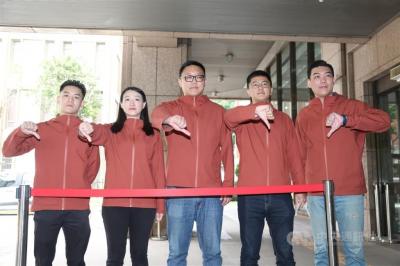A US senator has asked Christopher Marut, director of the American Institute in Taiwan (AIT), to visit former president Chen Shui-bian (陳水扁) in jail or hospital.
Senator Sherrod Brown, a Democrat, said in a letter sent this week to Marut that Chen is suffering from severe depression and is undergoing psychiatric treatment at Taipei Veterans General Hospital.
It is an obvious attempt by Brown to draw more attention to Chen’s case and increase the pressure on President Ma Ying-jeou (馬英九) to grant medical parole for Chen, who is serving a 17-and-a-half-year sentence for corruption.
“Reduced to a shadow of his former fiery self, Chen stutters and slurs his speech, and cannot walk far without tripping over,” The Economist magazine reported earlier this month.
“The prison’s harsh standard of treatment, which falls well below international norms, is contributing to serious illness,” the magazine said.
Chen’s continued incarceration, The Economist said, was not only undermining Ma’s “now dangerously low popularity,” but also faith in Taiwan’s system of justice.
“As advocates for human rights, freedom, democracy and the rule of law around the world, it is critical that we continue to support Taiwan,” Brown wrote to Marut.
Brown urged Marut to read a recent independent medical report that details Chen’s failing health and concludes that “in any democracy” this would be sufficient cause for immediate medical parole on humanitarian grounds.
“I ask that you review the report and visit the former president at the appropriate time,” the letter said.
“Senator Brown is a friend of president Chen, whom he has met on multiple occasions in Taiwan over the past decade,” Formosa Association of Public Affairs president Mark Kao (高龍榮) said. “It is touching to see a US senator ... reach out across the globe to a friend in need.”

Taiwan is stepping up plans to create self-sufficient supply chains for combat drones and increase foreign orders from the US to counter China’s numerical superiority, a defense official said on Saturday. Commenting on condition of anonymity, the official said the nation’s armed forces are in agreement with US Admiral Samuel Paparo’s assessment that Taiwan’s military must be prepared to turn the nation’s waters into a “hellscape” for the Chinese People’s Liberation Army (PLA). Paparo, the commander of the US Indo-Pacific Command, reiterated the concept during a Congressional hearing in Washington on Wednesday. He first coined the term in a security conference last

Prosecutors today declined to say who was questioned regarding alleged forgery on petitions to recall Democratic Progressive Party (DPP) legislators, after Chinese-language media earlier reported that members of the Chinese Nationalist Party (KMT) Youth League were brought in for questioning. The Ministry of Justice Investigation Bureau confirmed that two people had been questioned, but did not disclose any further information about the ongoing investigation. KMT Youth League members Lee Hsiao-liang (李孝亮) and Liu Szu-yin (劉思吟) — who are leading the effort to recall DPP caucus chief executive Rosalia Wu (吳思瑤) and Legislator Wu Pei-yi (吳沛憶) — both posted on Facebook saying: “I

Sung Chien-liang (宋建樑), who led efforts to recall Democratic Progressive Party (DPP) Legislator Lee Kun-cheng (李坤城), was released on bail of NT$80,000 today amid outcry over his decision to wear a Nazi armband to questioning the night before. Sung arrived at the New Taipei District Prosecutors’ Office for questioning in a recall petition forgery case last night wearing a red armband bearing a swastika, carrying a copy of Adolf Hitler’s Mein Kampf and giving a Nazi salute. Sung left the building at 1:15am without the armband and covering the book with his coat. Lee said today that this is a serious

The Ministry of Economic Affairs has fined Taobao NT$1.2 million (US$36,912) for advertisements that exceed its approved business scope, requiring the Chinese e-commerce platform to make corrections in the first half of this year or its license may be revoked. Lawmakers have called for stricter enforcement of Chinese e-commerce platforms and measures to prevent China from laundering its goods through Taiwan in response to US President Donald Trump’s heavy tariffs on China. The Legislative Yuan’s Finance Committee met today to discuss policies to prevent China from dumping goods in Taiwan, inviting government agencies to report. Democratic Progressive Party Legislator Kuo Kuo-wen (郭國文) said